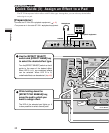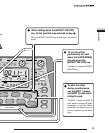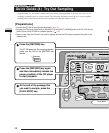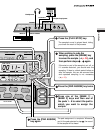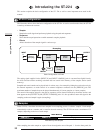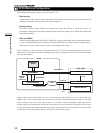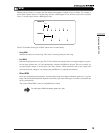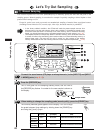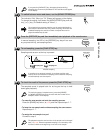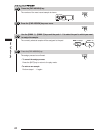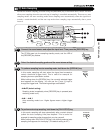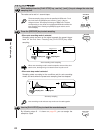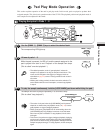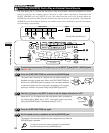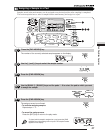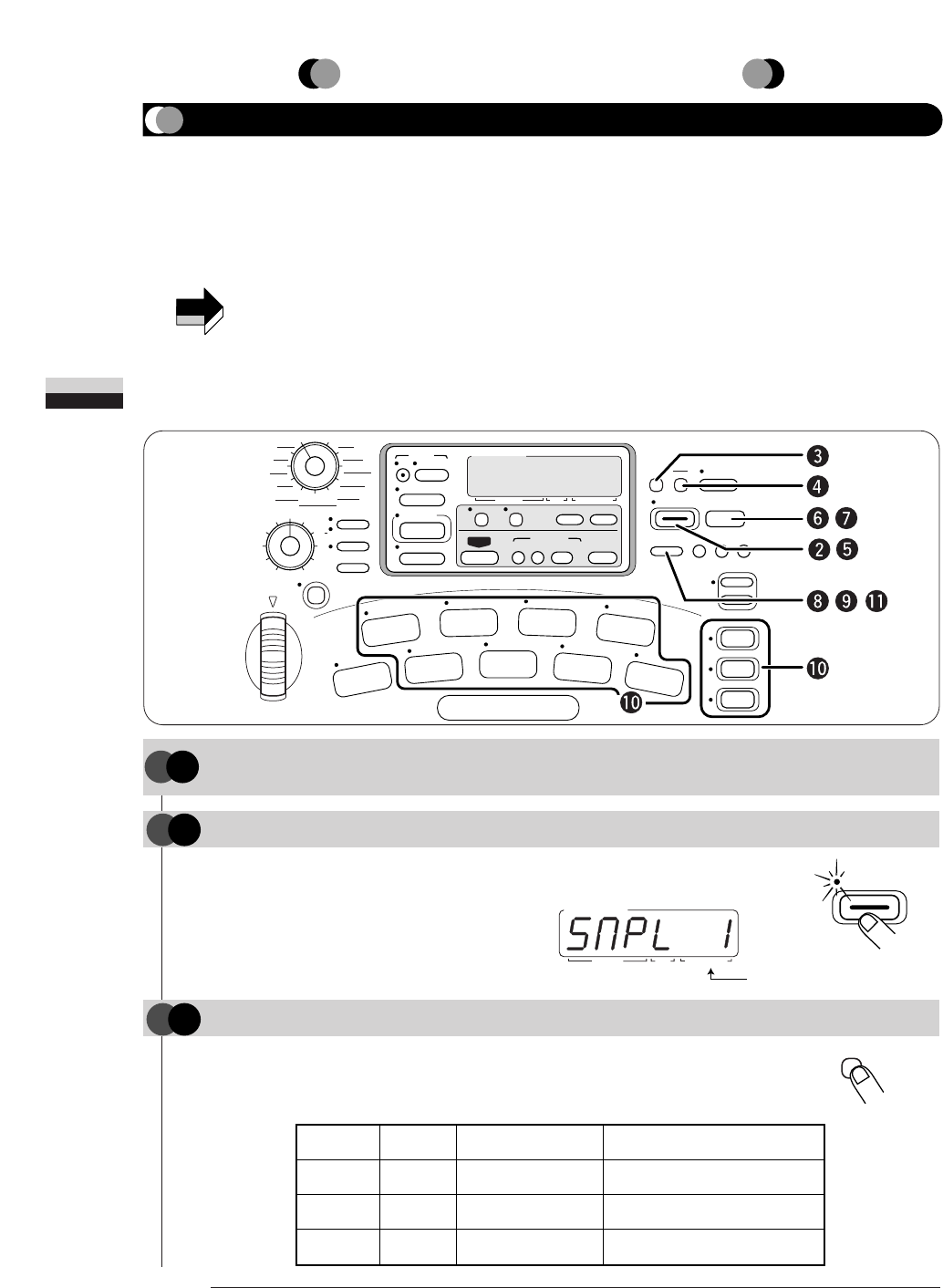
20
Let's Try Out Sampling
This section explains how to use the [RECORD] key to manually specify the start and end point of the
sampling process. Manual sampling is convenient for example for quickly sampling a desired rhythm or bass
pattern while listening to a CD.
Except for special cases such as personal use, unauthorized sampling of material from copyrighted sources
(including but not limited to CDs, records, tapes, video clips, broadcast material) is prohibited.
• In the factory default condition, the ST-224 will read the preset sample sources from
backup memory into the main memory. Also in this condition, it is possible to sample a new
source and store the result in a free area of the main memory, but for maximum recording
length, you should first erase some or all preset samples from the main memory (
➔
p. 36).
• The sampled waveform is temporarily stored in the main memory, but it will be lost if the unit
is turned off without first transferring the waveform data to the internal backup memory or
external data cards. (The next time the unit is turned on, the contents of the backup
memory will be read into the main memory.) Be sure to store important sample data (
➔
p. 59).
NOTE
The ST-224 goes into the sampling standby mode, and the LED of
the [RECORD] key flashes. A number for the new sample is shown on
the display.
The currently selected grade appears on the display. You can change
the grade between three settings by holding down the [GRADE] key
and using the [-] and [+] keys.
BANK
3
BANK
2
BANK
SONG
PAD
1
FUNCTION
PAD ASSIGN
CAPACITY
ERASE OPTIMIZE
PLAY/STOP
RECORD
RE-SAMPLE
GRADE
MONO
STEREO
SAMPLING
EDIT 2
VOLUME/BASS
EXCITER
TREMOLO
AUTO PAN
LO-FI EFFECT
EXTREME EQ
COMPRESSOR
RESONANCE
HIGH-PASS
LOW- PASS
DISTORTION
RING MODULATOR
PITCH SHIFTER
DIMENSION
CHORUS
PHASER
FLANGER
STEP CRY
DELAY
REVERB
TIME STRETCH
SCRATCH
EFFECT
ON/OFF
PAD ENABLE
A
B
EFFECT SYNC
EDIT 1
LOOP/MARK
4
SHIFT
OFFSET
6
SWING
PANNING
8
MIDI
TRIGGER/GATE
2
QUANTIZE
TUNING
SOURCE
SOURCE MIX
5
PRE COUNT
END POINT
3
TIME SIG
START POINT
1
BAR LENGTH
LEVEL
7
CLICK VOLUME
REVERSE
COPY DELETE
BACKUP
EXIT
SPECIAL
LOAD SAVE
INTERNAL/DATA CARD
+
–
AUTO SYNC
PLAYLIST
TAP
BPM
SONG
PLAY/STOPREC
BPM/
VALUE
MEASURE
SAMPLE/SONGBEAT
Sample number
BPM/
VALUE
MEASURE
SAMPLE/SONGBEAT
RECORD
GRADE
Connect the sound source (CD player or microphone etc.) to the [INPUT R] and [INPUT
L/MONO] jacks (
➔
p. 8 – 9).
1
STEP
Press the [RECORD] key.
2
STEP
When wishing to change the sampling grade (sound quality), press the [GRADE] key.
3
STEP
Let's Try Out Sampling
(1) Manual Sampling
Grade
Sampling
frequency
32kHz
Maximum sampling time
(per sample)
30 seconds
Sampling time
(total)
Mono 60 seconds/Stereo 30 seconds
HiFi
(High fidelity)
16kHz 60 seconds Mono 120 seconds/Stereo 60 seconds
Stnd
(Standard)
8kHz 120 seconds Mono 240 seconds/Stereo 120 seconds
LoFi
(Low fidelity)



